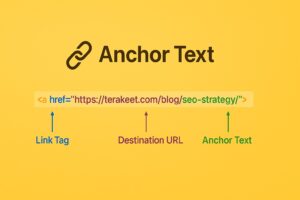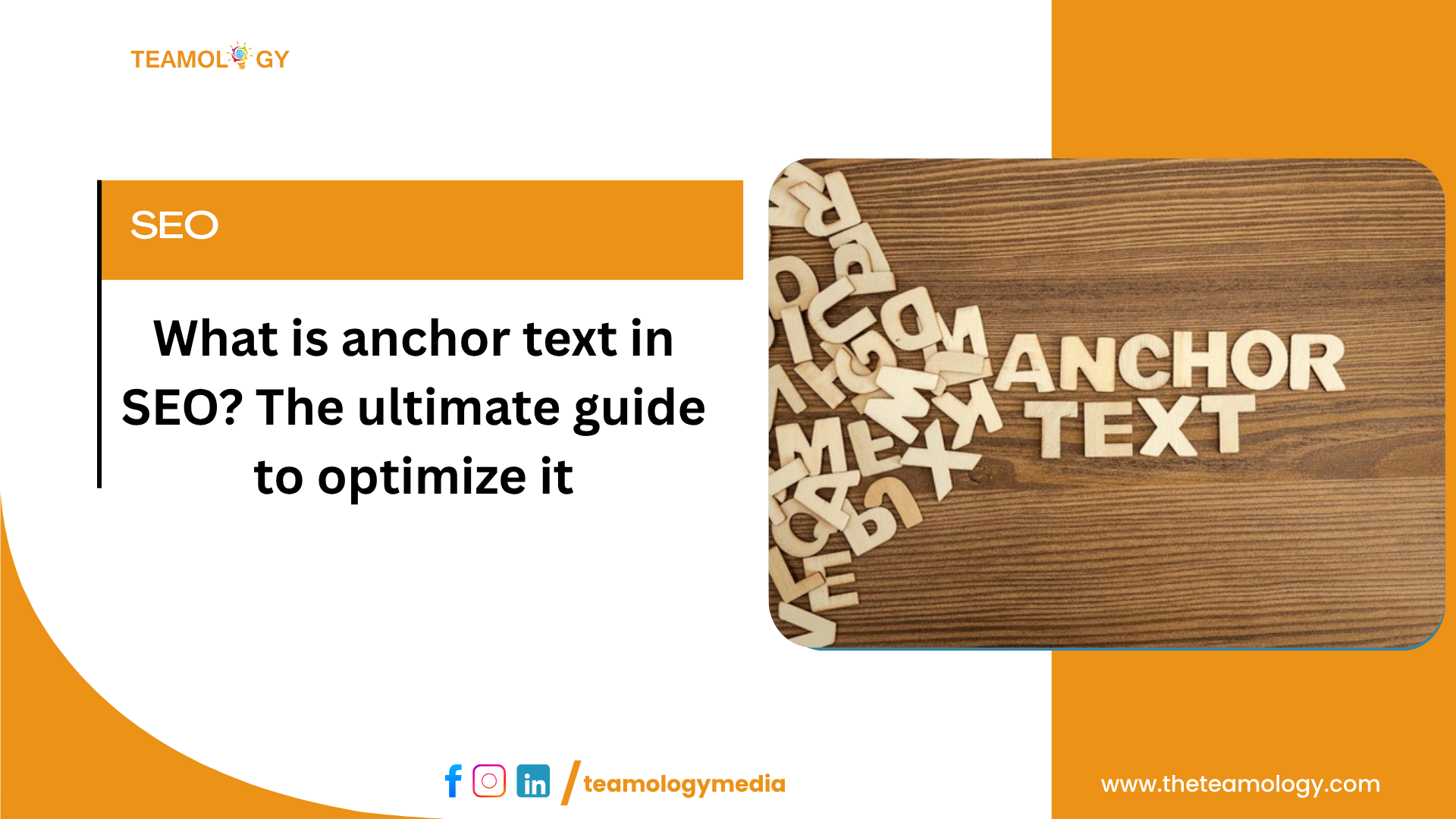When you read a blog or browse a website, you often see clickable words or phrases highlighted in blue or underlined. You click on them, and they take you to another page. That clickable text is called anchor text.
But here’s the real question: what is anchor text in SEO, and why do experts keep saying it’s important for ranking higher in Google? If you’ve been confused, don’t worry. This guide will walk you through everything you need to know—types, examples, importance, and most importantly, how to optimise anchor text for SEO.
What is Anchor Text in SEO?
Anchor text is the visible, clickable text in a hyperlink. It acts like a label for the link, telling both readers and search engines what the linked page is about.
For example:
Here, the phrase “Beginner’s Guide to SEO” is the anchor text. The link itself (the URL) remains hidden behind this clickable text.
So, if you’re wondering anchor text vs hyperlink, the hyperlink is the actual URL, while anchor text is the readable text you click on.

Why is Anchor Text Important in SEO?
The importance of anchor text in SEO lies in the signals it gives to search engines and users:
1. For Google:
- Anchor text helps search engines understand the topic and relevance of the linked page.
- If many websites link to a page with anchor text like “best digital marketing course”, Google assumes that page is relevant for that keyword.
2. For Users:
It sets clear expectations before clicking.
Instead of seeing an unclear “Click here,” descriptive anchors like “Download free SEO checklist” make navigation smoother.
3. For Website Owners:
Proper anchor text optimisation improves internal linking, boosts visibility, and increases ranking potential.
Type of Anchor Text
Not all anchors are created equal. Let’s look at the common types of anchor text with examples:
1. Exact Match Anchor
- Uses the exact target keyword.
- Example: “SEO tools” linking to a page about SEO tools.
2.Partial Match Anchor
- Includes a variation of the keyword.
- Example: “best tools for SEO beginners”.
3. Branded Anchor
- Uses the brand name.
- Example: “HubSpot guide”.
4. Generic Anchor
- Non-descriptive words like “Click here” or “Read more”.
- Example: “Learn more”.
5. Naked URL Anchor
- The plain URL is used as the anchor.
- Example: https://example.com.
6. Image Anchor
- When an image is clickable, the alt text acts as the anchor.
- Pro Tip: A healthy link profile usually has a mix of different anchor types.
Anchor Text vs Hyperlink: What’s the Difference?
Many beginners confuse these two. Let’s simplify:
- Hyperlink: The actual web address (URL) that points to another page.
Anchor Text: The visible text that contains the hyperlink.
Think of it this way: the hyperlink is the road, and the anchor text is the signboard telling you where that road leads.
Google’s Guidelines on Anchor Text
Google recommends keeping anchor text natural, relevant, and descriptive. Some best practices include:
Keep it short and to the point.
Avoid keyword stuffing.
Use context around the link for extra clarity.
Ensure image links include proper alt text.
Don’t use the same anchor for multiple different pages—it confuses both users and Google.
How to Optimise Anchor Text (Best Practices)
Now let’s talk about anchor text optimisation—how to do it right without looking spammy.
1. Be Descriptive
Instead of writing “Click here,” use something like “Explore our SEO case studies”. This helps both the reader and search engines.
2. Keep it Natural
Anchor text should fit naturally in your sentence. For example:
Good: Check out our guide on [content marketing strategy].
Bad: Check out our guide on [best content marketing strategy content marketing tips].
3. Use Keyword Variations
Mix up exact match, partial match, and branded anchors. This creates a natural profile and avoids over-optimisation.
4. Optimise Internal Linking
Link your important pages using meaningful anchors. Example: from a blog post about “SEO basics,” link to your “Advanced SEO” guide using a descriptive anchor.
5. Don’t Overdo It
Too many keyword-rich anchors can trigger spam signals. Balance is key.
6. Pay Attention to Images
When linking with images, always add alt text that accurately describes the target page.
Common Mistakes to Avoid
While learning how to optimise anchor text, here are pitfalls to watch out for:
Using the same keyword-rich anchor everywhere.
Linking multiple different URLs with the same anchor text.
Overusing generic anchors like “Click here”.
Ignoring accessibility by leaving image anchors without alt text.
Conclusion
So, what is anchor text in SEO? It’s the clickable text in a hyperlink that guides both readers and search engines. Getting anchor text right can boost rankings, improve user experience, and make your site easier to navigate.
From understanding the type of anchor text to following Google’s rules for anchor text optimisation, the key is balance. Be natural, be descriptive, and always think about the reader first.
Haven’t checked your anchor text yet? Contact us to grab your free anchor text audit today and secure stronger SEO tomorrow!
FAQs on Anchor Text in SEO
Q. Is anchor text still a ranking factor?
Yes, Google still uses it as a relevance signal, though context and quality matter more than sheer keyword matches.
Q. How long should anchor text be?
Ideally short—1 to 5 words. Long phrases look unnatural.
Q. Can I use the same anchor text for multiple links?
Not recommended unless it’s a navigation link or CTA button. For SEO, each anchor should point clearly to its most relevant page.
Q. Does voice or AI search care about anchor text?
Yes. Since AI-driven search engines prioritise context and user intent, descriptive anchor text improves discoverability and clarity.


